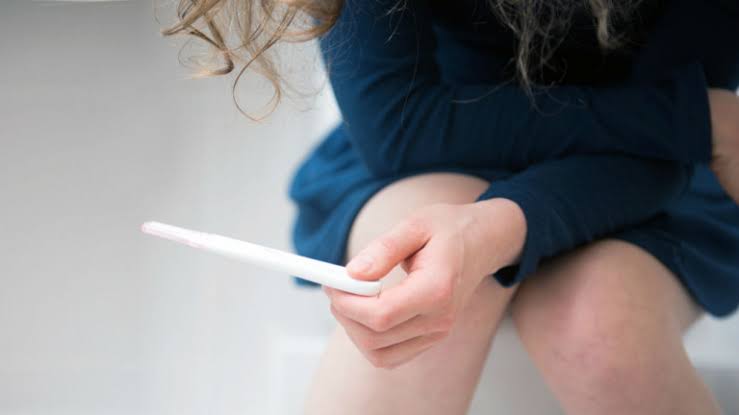
Are You Actually Ovulating?
If you are trying to conceive naturally, one of the most important things you need to check is that you
are actually ovulating. A regular cycle/monthly bleed is not proof that you are actually ovulating.
It is possible for your body to bleed every month without actually ovulating.
How Can You Confirm If You Are Ovulate
Quick biology lesson first
Ovulation, the release of an egg from its follicle in one of a woman’s two ovaries, is one of the most
important factors in conceiving a child. Once ovulated, the egg is picked up by one of the fallopian
tubes and begins traveling toward the uterus. In order for traditional conception to occur, the man
must ejaculate his semen, the fluid containing the sperm, into the woman’s vagina near the time of
ovulation. The man’s sperm must be capable of swimming through the vagina and cervical mucus,
up the cervical canal into the uterus, and up into the fallopian tube, where it must attach to and
penetrate the egg in order to fertilize it. The fertilized egg remains in the fallopian tube for a few
days and then continues traveling to the uterus and implants in the endometrium (lining of the
uterus), where it grows and matures. If all goes well, a child is born approximately nine months
later.
Ovulation is triggered by a surge of luteinizing hormone (LH) in the woman’s blood, and occurs
approximately 36 hours after the start of this LH surge.
There are several ways to detect ovulation:
- Urine test kits to measure LH levels/OPK (ovulation predict kit)
- Transvaginal ultrasound
- Endometrial biopsy
- Blood tests to measure hormone levels
- Basal body temperature (BBT) chart.
OPK Test
These kits use test strips that show changes in the level of LH in the urine. Once the LH surge has
occurred, ovulation usually takes place within 12 to 36 hours. Urine testing usually begins two days
prior to the expected day of ovulation. For women with 28-day cycles, ovulation usually occurs on
days 13 to 15. For women with irregular menstrual cycles, urine testing should be timed according
to the earliest and latest possible dates of ovulation. If the cycle ranges between 27 to 34 days,
ovulation usually occurs between days 13 to 20. Therefore, testing should begin on day 11 and
continue until ovulation is indicated or through day 20. There is an 80% chance of detecting
ovulation with five days of testing, and a 95% chance with 10 days of testing. Once ovulation is documented, it is no longer necessary to continue testing during that cycle. Occasionally, ovulation may not occur in a particular cycle.
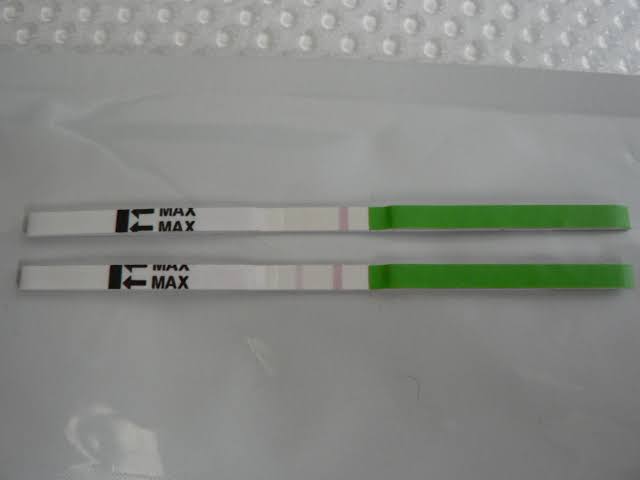
OPK Tests are not suitable for everyone
As the dominant follicle gets large enough, it secretes a significant amount of oestrogen which
triggers the release of Luteinising Hormone (LH) from the pituitary gland. Sometimes multiple
smaller follicles produces enough oestrogen to trigger an LH surge,but there is no dominant
follicle to release. a mature egg. It is possible for LH release to be triggered more than once in a
single cycle, as the feedback mechanism for LH release can be set off multiple times
Some people also have a very high LH throughout the cycle, or wildly fluctuating LH throughout
the cycle, both of which can make LH testing strips unreliable. This can be seen in PCOS or
patients with high Prolactin levels.
Basal Body Temperature (BBT) Chart.
The basal body temperature chart helps to monitor the duration of the different phases of the
menstrual cycle, and can help determine if and when ovulation has occurred. During the follicular
phase, the woman’s body temperature is relatively low. When progesterone production begins at
ovulation, it produces a temperature rise with a minimum increase of 0.5F or 0.3C. An increased
body temperature for several days indicates ovulation has occurred. BBT charts cannot predict when ovulation is going to occur; they only confirm that ovulation has occurred after the fact. Some women will monitor changes in their cervical mucus along with their BBT. As ovulation
approaches, a woman’s cervical mucus becomes more abundant, thin, slippery and stretchy. This is
an inexpensive, natural way to help identify a woman’s most fertile days.
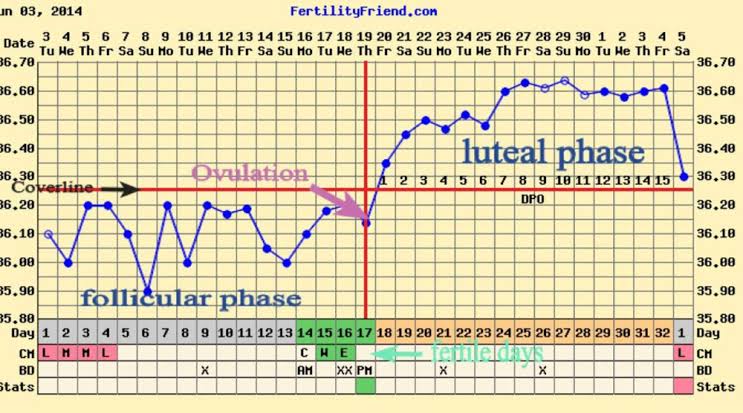
Day 21 Progesterone Blood Test
When a follicle is ready to be released, Luteinising Hormone is released by the pituitary gland
which triggers the rupturing of the follicle to release the egg. The spent follicle goes through a
process called luteinisation, quickly turning into something called a corpus luteum which pumps out
progesterone. Progesterone is used to prepare the body for potential conception, ripen the uterus
lining and upregulate the thyroid.
If progesterone is detected in your blood, it will have been produced by a corpus luteum, so in
theory it is proof that you ovulated – however the amount of progesterone can also indicate the
health of the corpus luteum and the potential quality of the egg released by the follicle. It is worth
noting though that it is possible for a follicle to fail to release the egg, but to continue to luteinise
and produce progesterone. The 21 Day Progesterone blood test is designed to test your progesterone
level at the peak of production – but timing for this test is critical. The average cycle is 28 days
long, and the average ovulation is at around 14 days, so the 21 Day Progesterone tests is designed to
capture the progesterone level at the peak. (see below for irregular cycles).
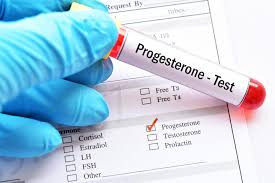
Interesting fact So Does Progesterone Always Indicate Ovulation?
No
It is unlikely, but possible that you could have something called a Luteinising Unruptured Follicle –
this is something that occurs in approximately 10% of normal menstrual cycles, but is thought to
occur more frequently in women struggling with infertility. In this situation, the follicle fails to
rupture, but does manage to luteinise into a corpus luteum so it is still able to generate progesterone
and stimulate the thyroid to raise the body temperatures so that it would appear as though ovulation
had occurred. An luteinised unruptured follicle can be detected on ultrasound but it is not easy to
identify and you need to make sure you use an expert fertility sonographer. If your doctor suspects
LUFS, it is possible to have a series of ultrasounds through your ovulation window to identify the
maturing follicle and to double check that it actually ruptures; if it fails to rupture, it will shrink to
about half the size and will contain fluid which can be picked up on the scan. There is some
evidence to suggest that Clomid can increase the likelihood of Luteinising Unruptured Follicle
Syndrome (Qublan et al, 2006).
Transvaginal Ultrasound.
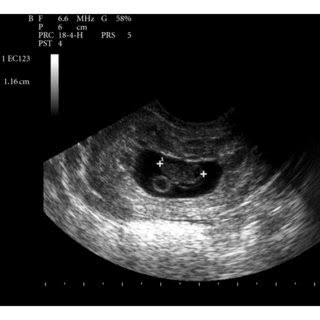
Follicular growth can be measured with
ultrasound, a technique which uses sound
waves to produce an image on a monitor
screen. This is a painless procedure
usually done with a probe inserted into the
vagina, but may be done with an external probe placed on the abdomen. Prior to ovulation, the
follicle is thin-walled and filled with fluid. As the egg inside the follicle develops, the follicle
increases in size. Ovulation generally occurs when the follicle measures about 1.8 to 2.5 cm
If you are having an ultrasound after you have ovulated, check whether they can identify a corpus
luteum and check that there are no signs of a luteinized unruptured follicle.
Endometrial Biopsy.
Progesterone, a natural ovarian hormone, helps prepare the endometrium to receive an embryo. An
endometrial biopsy is occasionally used to determine if a woman has ovulated, and if the
endometrium has been adequately stimulated with progesterone. Usually only performed if undergoing fertility/IVF treatment.
SHORTER CYCLES If your cycle is 23/24 days long, your progesterone level on Day 21 will
probably register lower than your peak progesterone because the level may already be falling in preparation for your period. If your cycle is short, I would recommend you use a BBT chart for a
month to get some information about whether you have a short follicular phase or a short luteal
phase, and to work out the best time to measure your progesterone.
LONGER CYCLES If your cycle is 33 days long, it is possible that you haven’t even ovulated by
Day 21, so your progesterone test would have a disappointing result that reveals nothing about your
true progesterone cycle. If your cycle is regularly long, aim to test your progesterone level 6-7 days
before your period is due which should be at around the peak of progesterone.
Read Next Blog Post: Reason why you are not ovulating.



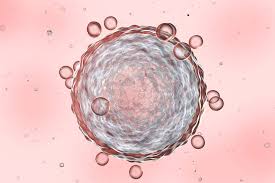

0 Comments